Contents
A compact, high-yielding, undemanding variety has won the hearts of many gardeners. Let’s see what it is good for and whether it has disadvantages.
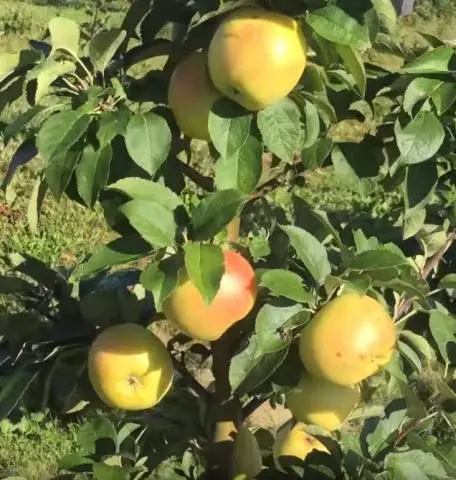
History of breeding
The variety was developed back in 1974, but for a long time it was known in a small circle. Obtained from crossing the varieties Vozhak, compact columnar, and Abundant, by the domestic breeder I. I. Kichina.
Description of the variety and characteristics
Variety President is recommended for cultivation in Samara, Moscow and other regions.
Mature tree height
The variety belongs to semi-dwarf trees, the height of a five-year-old plant does not exceed 2 meters. With an average level of agricultural technology, it grows to 1,70 – 1,80 cm.
Fruit
The fruits are large, less often – medium. The weight of one apple of the President variety is from 120 to 250 grams. The peel is thin, medium density. The keeping quality is low. At temperatures above 15 degrees, signs of wilting appear in a month. When stored at a stable temperature of 5-6 degrees, the shelf life increases to 3 months.
The color of the apple is yellow-green with a characteristic blush. The fruits are elliptical in shape.
Productivity
The average yield is 10 kg per tree. The fruiting of the columnar apple tree of the President variety is very dependent on the level of care for the plant. When using intensive agricultural technology, you can get up to 16 kg of selected fruits.
Winter hardiness
The resistance of the columnar apple-tree of the President variety to sub-zero temperatures is low. Possible freezing of shoots, including the apical. When the soil freezes at a depth of more than 20 cm, the root system may die.
Freeze cracks represent a particular danger to the columnar apple tree President. If the bark is damaged, the tree can become infected with fungal diseases. It is necessary to treat cracks as quickly as possible, it is desirable to add a systemic fungicide to the mixture.
Resistance to diseases
Subject to all the requirements of agricultural technology, trees of this variety easily resist diseases. With any errors in care, immunity is significantly reduced.
crown width
The crown of the apple-tree of the President variety is not wide, up to 30 cm. The foliage is high.
Self-fertility
No special pollinators are required for the formation of fruits in the apple tree of the President variety. However, it is believed that trees surrounded by related crops produce a greater yield.
The frequency of fruiting
Weakly expressed. As a rule, the columnar apple tree of the President variety bears fruit annually.
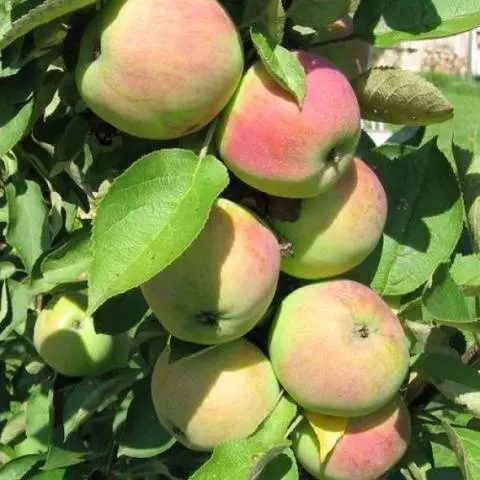
Tasting assessment
The pulp of the apple is fine-grained, juicy. The taste is sweet and sour, pronounced. The aroma is strong, characteristic of the variety. Tasters rate this apple quite highly, up to 4,7 points.
Landing
Before planting, you need to know the characteristics of the soil and the level of groundwater. Neutral, well-drained land is suitable for growing the President columnar apple tree. Acidic soil must be deoxidized with dolomite flour. In places with a high level of groundwater, apple trees are not planted. Suitable for planting raised sunny areas, well protected from the wind. The tree easily tolerates a little shading.
The root system of the President’s columnar apple tree is small, so when planting, a planting hole is carefully prepared. Depths of 60 cm are enough, it is desirable to dig at least 70 cm wide. The pulled soil is crushed, compost, rotted manure, and, if necessary, sand are added. The amount of additives depends on the soil. A bucket of sand is poured into heavy clay soil; such an additive is not required for sandy soil.
A sapling of a columnar apple tree President is placed in a hole, holding on weight, carefully falling asleep. The place of the root collar should be at least 10 cm above ground level, it cannot be deepened. After planting, pour abundantly, at least 2 buckets into each hole.
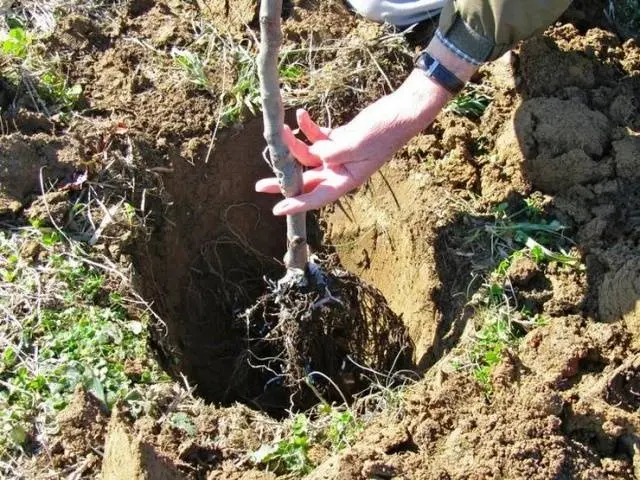
In the autumn
Autumn planting begins, focusing on the beginning of leaf fall. Slight frosts will not prevent the President’s apple tree from restoring in a new place, a dry autumn can pose a danger. If there is no rain, the apple tree is abundantly poured every 3 days.
In the spring
Spring planting of apple trees begins after the soil has completely thawed. If necessary, you can speed up the process – cover the pit with black material, for example, agrofibre.
Care
A lot depends on proper agricultural technology – the health of the tree and the future harvest. You should not neglect these requirements, you can lose a valuable garden crop.
Watering and feeding
Apple-tree President requires regular watering, in spring and autumn at least once a week. Particular attention should be paid during flowering and the formation of ovaries, the number of waterings is increased up to 2 times a week. Summer watering depends on the amount of precipitation, the apple tree will need additional moisture 5 days after heavy rain. Watering more often is not worth it, excess water reduces the supply of oxygen to the root system.
Very good results are obtained when using drip irrigation systems in combination with soil mulching. Stable humidity stimulates the development of the plant and contributes to good yields.
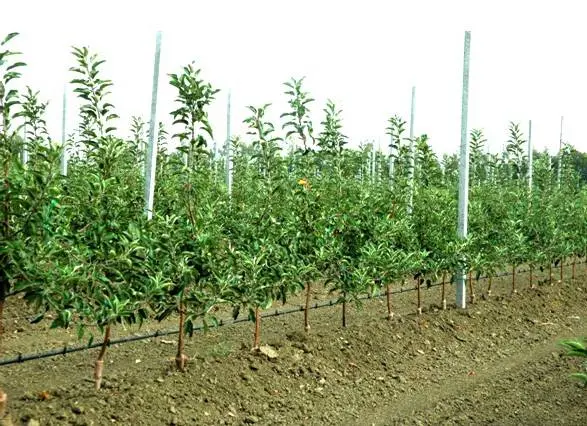
Fertilization begins in the second year of the life of the apple tree, from the beginning of the growing season. Immediately after the snow melts, saltpeter, dry or diluted, is added to the root circle. Usually, a tablespoon of fertilizer is used per tree, for some manufacturers the recommended dose may vary slightly.
The second application is carried out, if necessary, after the start of the growth of green mass. Too light, especially with yellowness, leaves, may indicate a lack of phosphorus. You can use any complex fertilizer containing this microelement.
Before the flowering of the columnar apple tree, the President must apply potash fertilizers. Potassium improves the general condition of the plant, increases the number of ovaries. The second time this fertilizer is added during fruit ripening. It has been proven that an increased amount of potassium stimulates the formation of sugars in fruits.
In the autumn, when preparing a tree for wintering, a fertilizer complex is applied that does not contain nitrogen.
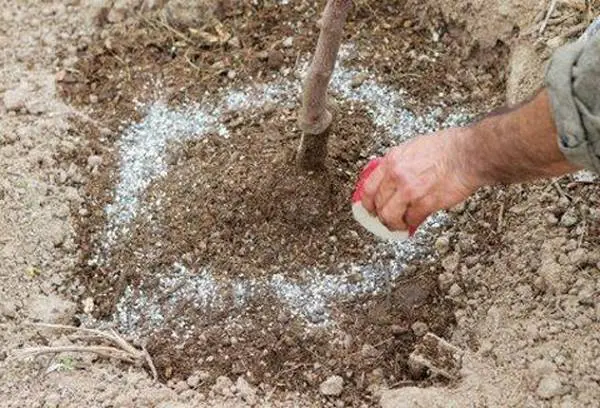
Preventive spraying
A healthy tree needs 3 sprays during the growing season. If the tree itself or neighboring plants show signs of disease, the number of treatments is increased.
The first treatment of the columnar apple tree President is carried out in the spring, before the appearance of green buds. It is necessary to destroy the spores of the fungus, which could overwinter on the bark. To do this, you can use Bordeaux mixture or other fungicides.
After the appearance of the first leaves, a second treatment is carried out, systemic fungicides and insecticides are used.
The last treatment of the columnar apple tree of the President variety is carried out in the fall, after the end of leaf fall. The tree is sprayed with contact fungicides.
Trimming
Formative pruning of the president apple tree is not needed, sanitary is enough. In the spring, dry or damaged branches are removed, thin and poorly developed ones are also removed. If several branches grow in the same direction and can compete, leave one of the strongest, the rest are removed.
Shelter for the winter
The winter hardiness of the President columnar apple tree is relatively high, but even in the southern regions it is advisable to make a shelter to avoid the appearance of frost holes. Under normal conditions, it is enough to tie the trunk with agrofiber and cover the root area with 2 – 3 buckets of humus.
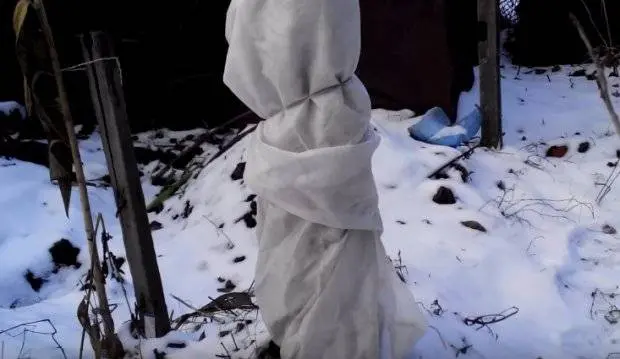
In colder regions, spruce branches or other insulating material is fixed on top of the agrofibre. The snow around the trees must be trampled down several times to avoid damage by rodents. Also, to protect against pests, it is desirable to leave pickled grain in the access zone for rodents.
Advantages and disadvantages of the variety
The undoubted advantages of the columnar apple tree President can be considered productivity, excellent taste characteristics, stable fruiting. The disadvantages include weak resistance to drought and low keeping quality of fruits.
Pests and diseases
With regular preventive spraying, diseases and pests annoy the President’s columnar apple tree infrequently, but it is still necessary to know the signs of the most common problems.
destroyed
Fungal disease, attacks young shoots. It is characterized by the appearance of green spots of various shades, which gradually darken.
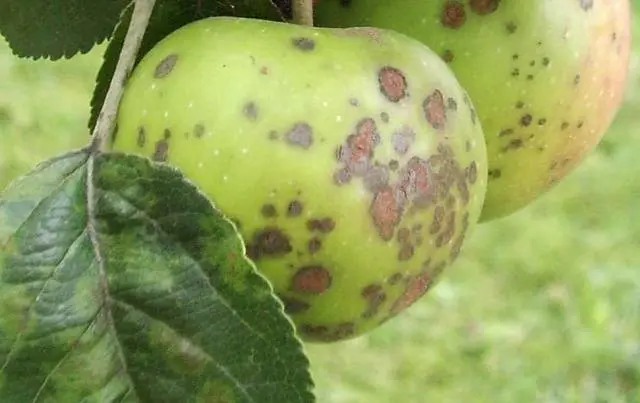
Mučnistaâ rosa
Fungal disease. Whitish spots appear on the leaves and bark.
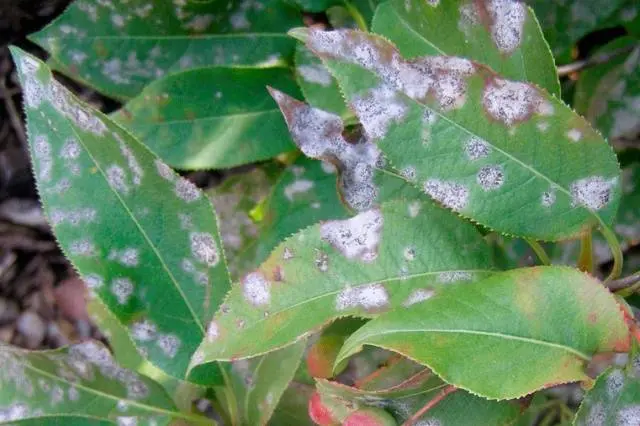
Bacterial burn
The disease is caused by bacteria that develop intensively in the warm, humid season. Tree branches darken, gradually acquiring a black color.

aphid
A small, translucent insect that sucks juice and nutrients from young parts of a tree.
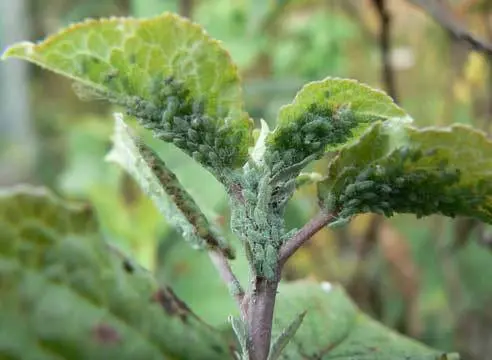
Mite
A very small insect. The appearance can be seen by convex areas on the leaves and fruits of the apple tree. Affected parts blacken over time.
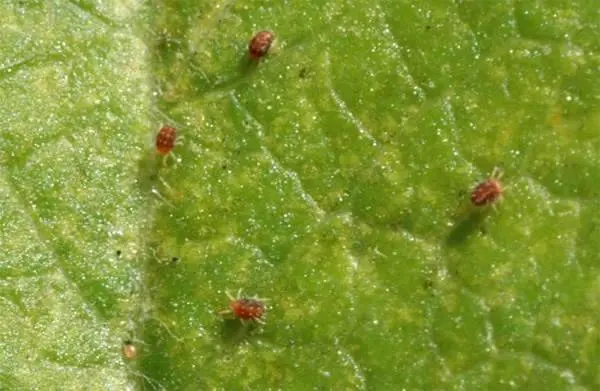
Conclusion
Of course, the columnar apple tree President is a promising inhabitant of the garden plot, but in order to enjoy the fruits longer, it is still worth planting several other varieties.









